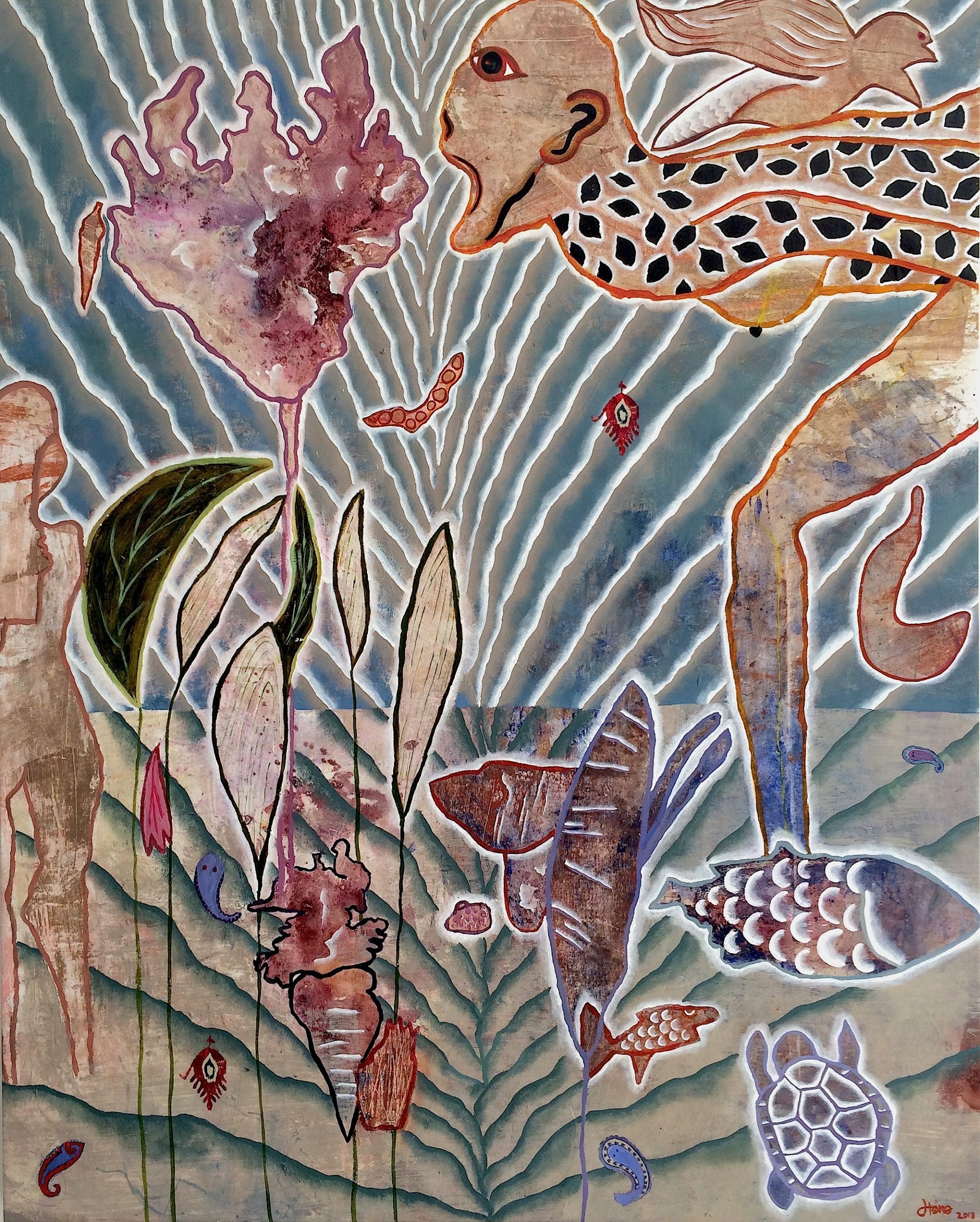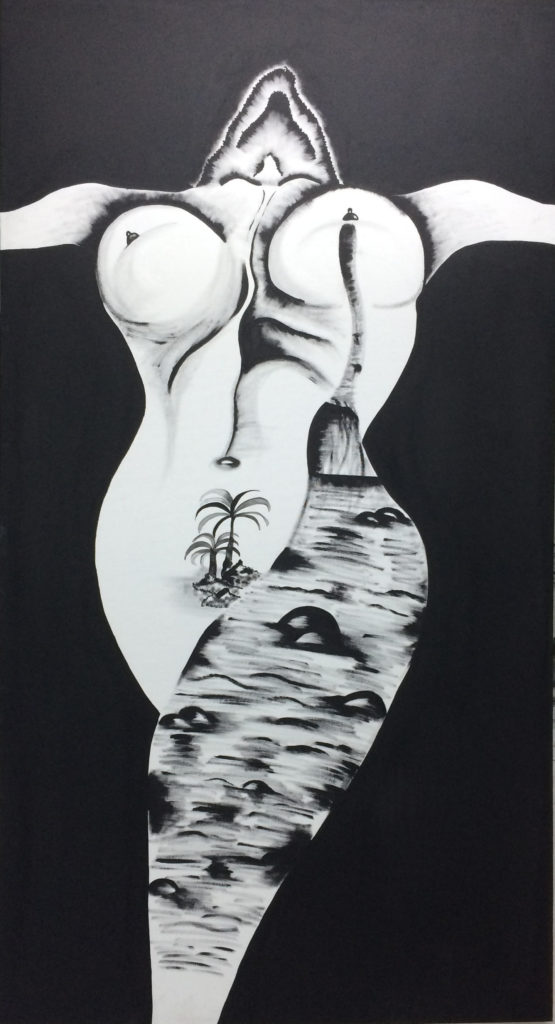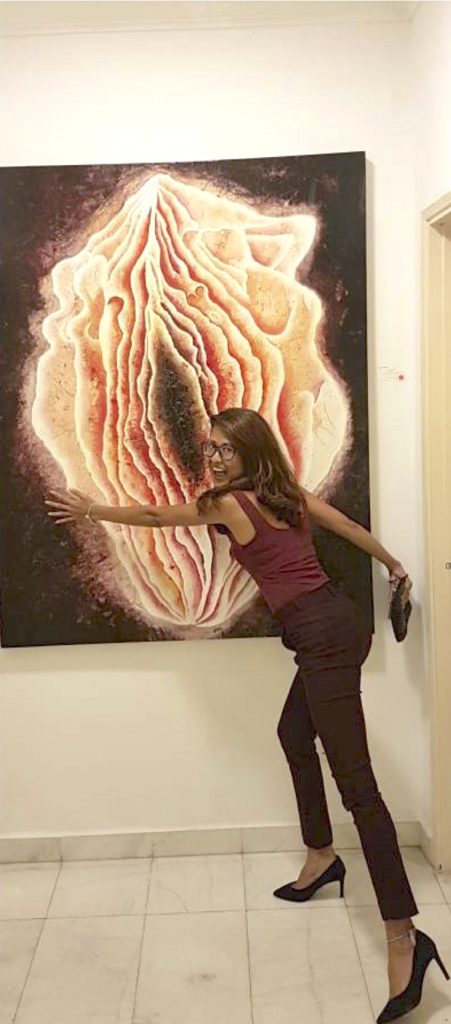
By HAMIDAH ABD RAHMAN
Malaysia’s Conditional Movement Control Order (CMCO) has impacted the arts sector, with many facing losses. People all over the country are currently being subjected to many restrictions, but the burdens are surely greater for aspiring artists.
With this in mind, I decided to interview a young, budding Malaysia artist, Hana Zamri, about her life, art and experiences during the CMCO.

Hana, 31, has dabbled in the Malaysian arts scene for three years now, producing allegorical paintings, mainly with acrylic and mixed media.
She also actively worked as a co-curator for the Cult gallery, a private art gallery in Kuala Lumpur, on its collaborations with non-governmental organisations such as Sisters in Islam (SIS) for its annual charity exhibitions. Its last exhibition, held in early October and titled Free/Bebas, was the most recent that she participated in this year.
Despite the pandemic, Hana’s tenacity to continue producing art and to establish a name for herself in the Malaysian arts scene is commendable.
How did you start as an artist?
Before venturing into the art industry, I did my degree in Architecture at the International Islamic University of Malaysia (IIUM). I worked in design and later, taught visual art at an international school. From there I realised that I didn’t want to teach art. I wanted to make art. I wanted to be an artist.
My colleague Nad told me that to be an artist here, I needed to know the scene, the people and the events. I thank her for encouraging me to do my Masters in Fine Art at the University Teknologi Mara (UiTM) as that was where I started.
Being involved in the Malaysia art scene, who inspires you?
I’ve met wonderful women who’ve inspired me. It’s not easy being a woman in this industry. The Cult gallery manager where I work part-time, Suryani Senja Alias, is an intelligent individual and she strongly advocates for women artists to succeed. Senior women artists, Noor Mahnun Mohamed and Anniketyni Maidan, are also talented, courageous and hardworking. To me, they are inspiring.
As women, we need to continuously support other women artists as inequality seems to exist in the art world. There is a higher percentage of female graduates in the arts, yet I see more male artists at art shows. Why is that? I wonder.

Has your upbringing influenced your art?
Definitely. I was born in Perak but never lived there. I grew up in different cities, such as Beijing, Guangzhou, Zagreb, Khartoum and Muscat, due to my father’s job. Being a “third-culture kid”, my work’s themes and concepts stem from my upbringing. Identity and sense of belonging have been in the narrative of my art-making, as I question my own. If you ask me where I am from, I don’t know.
I’ve always felt that lost sense of belonging since returning to Malaysia for university, after living in different locations with Muscat being my last. My parents are Malay but I don’t label myself as from a particular race or culture. I always feel that my identity shifts back and forth, floating around. My fluctuating sense of belonging is always an underlying theme in every aspect of my work.
How do you link those themes of identity into your art?
To reconcile with the condition of disorientation, I paint through conceptual and allegorical play of landscapes, female figures and body parts to question my sense of belonging, roots and identity. Re-constructing maps of my own, re-shaping my perspectives of the world’s landscape and terrain, is to mirror my own unsettling nomadic experience. In my paintings, I try to fix myself in a territory by constantly playing with contouring in map-making, to define and to re-define who I am and where I really belong.

How was your experience as an artist during the CMCO?
I want to be a full-time artist, but currently I have to do other jobs. I do freelance writing, where I write curatorial briefs for exhibitions. I’ve also been an assistant curator, a part-time lecturer, and work part-time at the Cult gallery.
It’s difficult to be a full-time artist, especially as someone new in the art industry. For example, if I sell a painting for RM5000, 50% of the earnings goes to the gallery and I get RM2500. It’s still good money but it has to last for four to five months until the next time I sell another painting. I’m also uncertain when the next work would be sold.
It’s good to have side jobs. I’m grateful that I’m capable of teaching and working in a gallery, and that I have work experience outside of the art world.
How do you remain creative in this pandemic?
When I have canvases, I paint non-stop. I can’t lose my momentum as it’s hard to get back into it if I leave it for too long.
What are your future plans?
Next year, I’m planning to do a group show with other young artists. I’m trying to be more active in submitting my work to exhibitions and to be more courageous.
If you are interested to know more about Hana’s art, you can follow the artist on Instagram at @han.m.z
Hamidah Abd Rahman is a writer in the CENDANA-ASWARA Arts Writing Mentorship Programme 2020-2021
